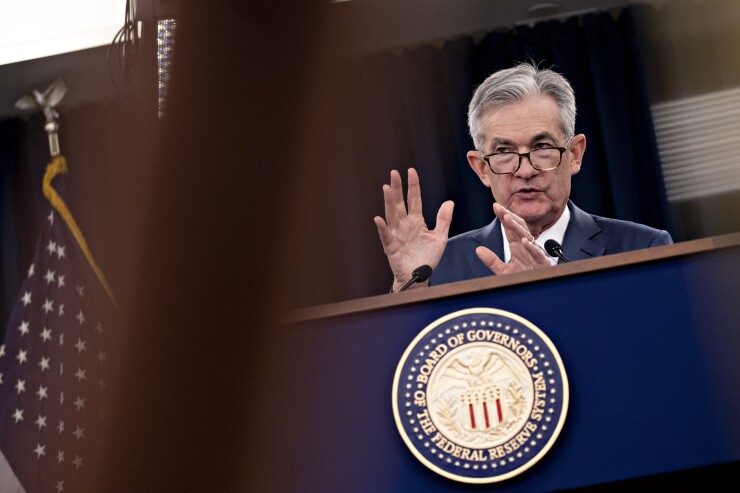Bloomberg News
Inflation continued to show signs of easing in the Federal Reserve’s preferred pricing index, setting the central bank up to cut interest rates for the first time in more than four years next month.
The personal consumption expenditures, or PCE, index for July came in at 2.5% over the same point last year, according to a report released by the Bureau of Economic Analysis on Friday. Core PCE, which factors out food and energy, was up 2.6% year over year. Prices rose 0.2% from June in both indexes.
Both the headline and core figures mirrored June’s readings of 2.5% and 2.6%, respectively. Annualized core PCE inflation has now held steady or fallen every month for the past 15 months. Fed Chair Jerome Powell has said this downward trajectory has bolstered his confidence that inflation is on a “sustainable path” to the Fed’s 2% target.
During his speech in Jackson Hole, Wyoming, earlier this month, Powell said the inflation picture has improved to the point that the Fed could begin easing monetary policy in the near future.
“The time has come for policy to adjust,” he said. “The direction of travel is clear, and the timing and pace of rate cuts will depend on incoming data, the evolving outlook, and the balance of risks.”
The Fed’s target range for the federal funds rate has been between 5.25% and 5.5% since July 2023. During the past year, Powell and other members of the Federal Open Market Committee have said the decision to begin easing monetary policy will be based on economic data and they would rather risk waiting slightly too long to begin cutting rates than move too early.
Federal Reserve Bank of Atlanta President Raphael Bostic, a current voting member of the FOMC, reiterated that point earlier this week during public remarks in Georgia.
“I don’t want us to be in a situation where we cut and then we have to raise rates again,” Bostic said Wednesday. “So, if I’m going to err on one side, it’s going to be waiting longer just to make sure that we don’t have that up and down.”
Market participants have been factoring in a rate cut of at least a quarter percentage point since the Fed’s last FOMC meeting in July, according to CME’s FedWatch tool, which tracks expectations through 30-day Fed Funds futures trading. As of Friday morning, two-thirds of the contracts priced in a 25-basis-point cut while the rest expected a half-percentage-point drop.
The favorable PCE inflation reading was broadly expected. Other key indexes from July had already shown positive developments in inflation, including the Consumer Price Index, which was up 2.9% over last year, and the Producer Price Index — which explores demand-side pricing — up just 2.2%.
All eyes now turn toward the labor market with two key reports due out next week. First, the Job Openings and Labor Turnover Survey, or JOLTS, report from July, which is set for release on Wednesday, then the Employment Situation report for August, which is set to release on Friday.
During his Jackson Hole speech, Powell said the full employment side of the Fed’s dual mandate has overtaken price stability as the more pressing concern facing the economy.
“The upside risks to inflation have diminished and the downside risks to employment have increased,” he said. “As we highlighted in our last FOMC statement, we are attentive to the risks to both sides of our dual mandate.”
There will also be another CPI release on Sept. 11, one week before the next rate-setting meeting. While core PCE is the Fed’s preferred measure, the FOMC takes a wide range of readings into consideration.
